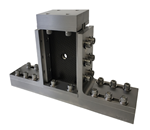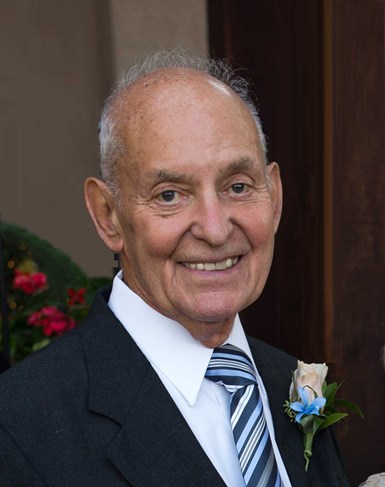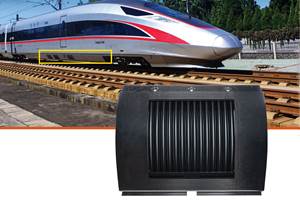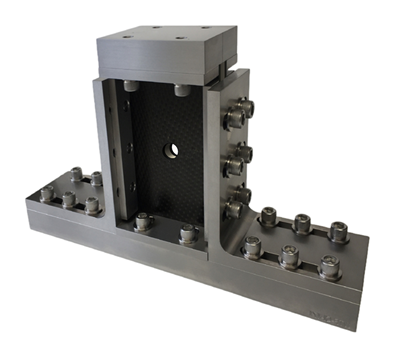Remembering Don Adams
When one thinks of composites test methods, one thinks of Don Adams. Don passed away at the end of 2022. We remember him here.
Share
Read Next
I think we all understand that the composites industry has been and continues to be shaped by people who have a deeply felt dedication to the development and advancement of fiber-reinforced materials and processes.
The hard part, especially for those of you new to this industry, is to understand the significance of these accomplishments and how they still resonate today. In that spirit, I want to tell you about someone who you likely did not know — or, for those who have spent their career in composites, and similarly, spent it with CompositesWorld, someone you did know quite well — and whose influence you almost certainly have felt.
I first met Dr. Don Adams in 2007. I had just become editor-in-chief of CW. Don was the founder of Wyoming Test Fixtures and an author for CW, writing a column called Testing Tech, which focused on test protocols and standards for composite materials.
Don started writing for CW in March 2005 and was a much-respected figure in these pages, sharing his long experience and deep knowledge of best practices in materials testing. His articles are among the most loyally read in the magazine’s history.
In January 2023, just after the holidays, we learned that Don had passed away in late December. He was 87. Don’s close affiliation with CW, combined with his influence on the industry, demands a closer look at his accomplishments and contributions. I talked to Dan Adams, Don’s son, about his father to better understand his life and work.
Don was born in 1935 in Streator, Ill., U.S. He attended the University of Illinois, where he earned his bachelor’s in mechanical engineering in 1957. He married his high school sweetheart Roberta that summer and they moved to Southern California where Don had landed a job with Northrop Aircraft Corp.
While at Northrop, Don earned his master’s in mechanical engineering from the University of Southern California. Then, it was back to the University of Illinois, where Don received his Ph.D in theoretical and applied mechanics in 1963.
Don decamped again to California, working first for the Aeronautic Div. of Ford Motor Co. and then, in 1967, the Rand Corp. Dan says it was here, at Rand, that Don first started developing new test methods for composites. The composites industry was still in its infancy and composite-specific test methods were in the very early stages of development. Don, says Dan, was on the ground floor of this important discipline.
I remember Don as a quiet, thoughtful, dedicated person who had deep respect for his work and the people who surrounded him.
At Rand, Don helped develop the first of two composite test methods with which he is most closely associated. The first is the Iosipescu shear test method, adapted from a sheet metal shear test method and developed in response to demand for a composites shear test standard. Today, that composites test method is very well known as ASTM 5379.
Don’s second big contribution came a few years later, at the University of Wyoming (Laramie), where, in 1972, he’d taken a faculty position in the Department of Mechanical Engineering. (Ask Dan what it was like to move from Malibu to Laramie as an eighth grader.) Don founded the Composite Materials Research Group (CMRG) at the university and while there developed the Combined Loading Compression (CLC) test method, known today as ASTM D6641.
(From Don’s book: “The Iosipescu shear test method and specimen configuration are based on the original work with metals by Nicolai Iosipescu of Romania (1957), from which the test method derives its name.” Fun fact: In reality, it was Don who preserved the name “Iosipescu” shear test, as he wanted to ensure that the original founder was given credit when Don and his colleagues/students developed the adaptation of the method for composites.)
Don’s tangible contributions notwithstanding, his legacy rests in part on the fact that he was among a small group of early innovators in composites testing. Plus, he had a natural predilection for educating and helping people. “He always enjoyed hearing about other’s testing experiences and he was really good at helping guide people through the testing process,” Dan emphasizes. This knowledge and experience was highly sought after in this young and dynamic discipline.
Another of Don’s trademarks was his ability to apply dogged research to prickly test method problems. Dan says Don became known at ASTM meetings for turning controversial test questions into graduate research projects, and then leveraging the resulting data into improved standards. “He didn’t just have opinions,” Dan says. “He had the data to back them up.”
I remember Don as a quiet, thoughtful, dedicated person who had deep respect for his work and the people who surrounded him. He holds a special place in the history of this industry and will be very missed.
And, of course, Don lives on in CW and in the industry through Dan, who took over his father’s column-writing duties in 2015. Since then, Dan has been a regular contributor to our Design & Testing column and carries the same passion for composite materials testing as his father.
Related Content
Bladder-assisted compression molding derivative produces complex, autoclave-quality automotive parts
HP Composites’ AirPower technology enables high-rate CFRP roof production with 50% energy savings for the Maserati MC20.
Read MoreComposite sidewall cover expands options for fire-safe rail components
R&D project by CG Rail explores use of carbon fiber-reinforced thermoplastics and recycled manufacturing scrap to meet fire safety, weight and volume targets.
Read MoreASCEND program update: Designing next-gen, high-rate auto and aerospace composites
GKN Aerospace, McLaren Automotive and U.K.-based partners share goals and progress aiming at high-rate, Industry 4.0-enabled, sustainable materials and processes.
Read MoreImproving carbon fiber SMC simulation for aerospace parts
Simutence and Engenuity demonstrate a virtual process chain enabling evaluation of process-induced fiber orientations for improved structural simulation and failure load prediction of a composite wing rib.
Read MoreRead Next
Notched testing of sandwich composites: The sandwich open-hole compression test
A new ASTM-standardized open-hole compression test method seeks to determine the notch sensitivity of sandwich composites.
Read MorePlant tour: Daher Shap’in TechCenter and composites production plant, Saint-Aignan-de-Grandlieu, France
Co-located R&D and production advance OOA thermosets, thermoplastics, welding, recycling and digital technologies for faster processing and certification of lighter, more sustainable composites.
Read MoreAll-recycled, needle-punched nonwoven CFRP slashes carbon footprint of Formula 2 seat
Dallara and Tenowo collaborate to produce a race-ready Formula 2 seat using recycled carbon fiber, reducing CO2 emissions by 97.5% compared to virgin materials.
Read More























